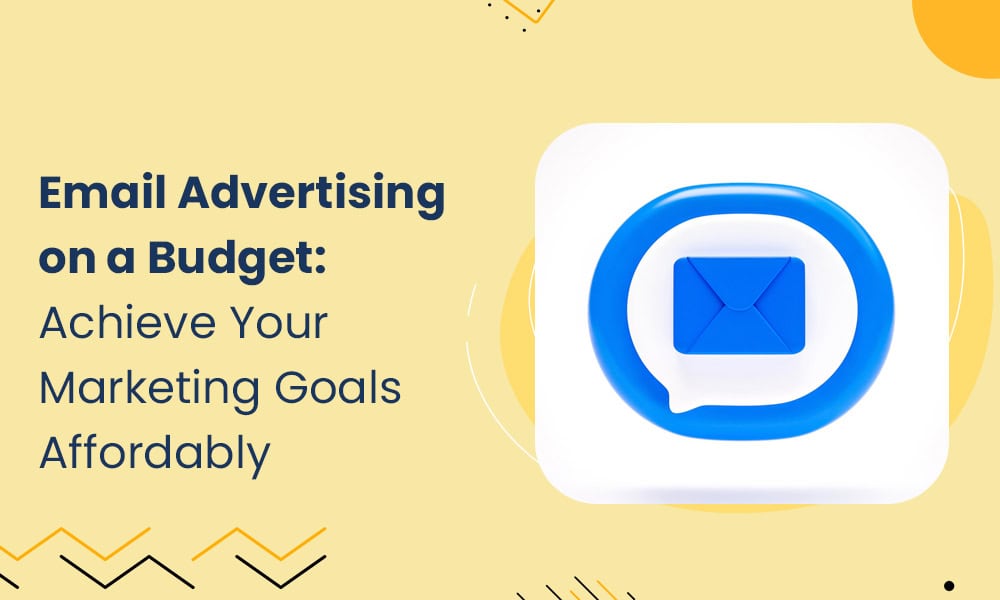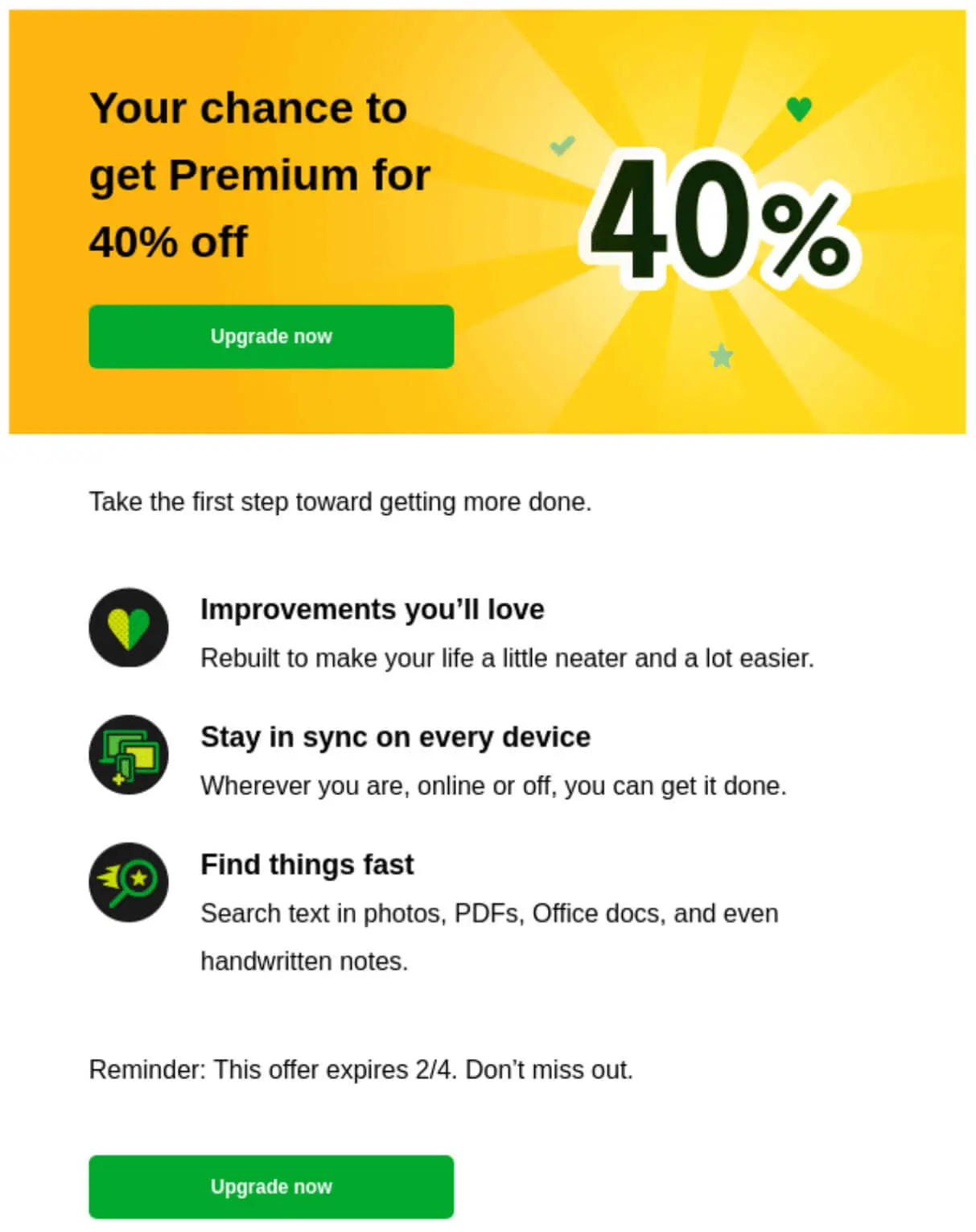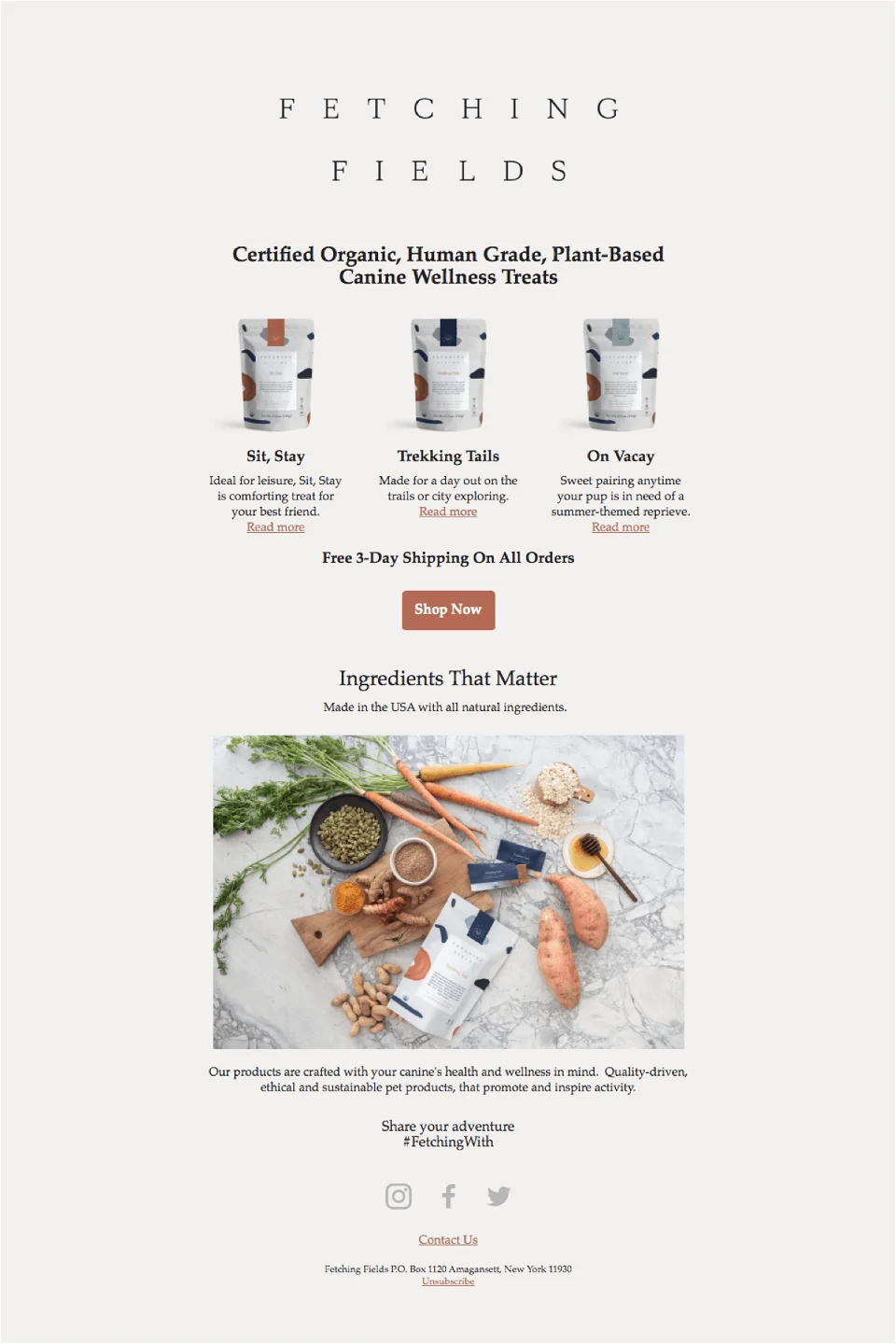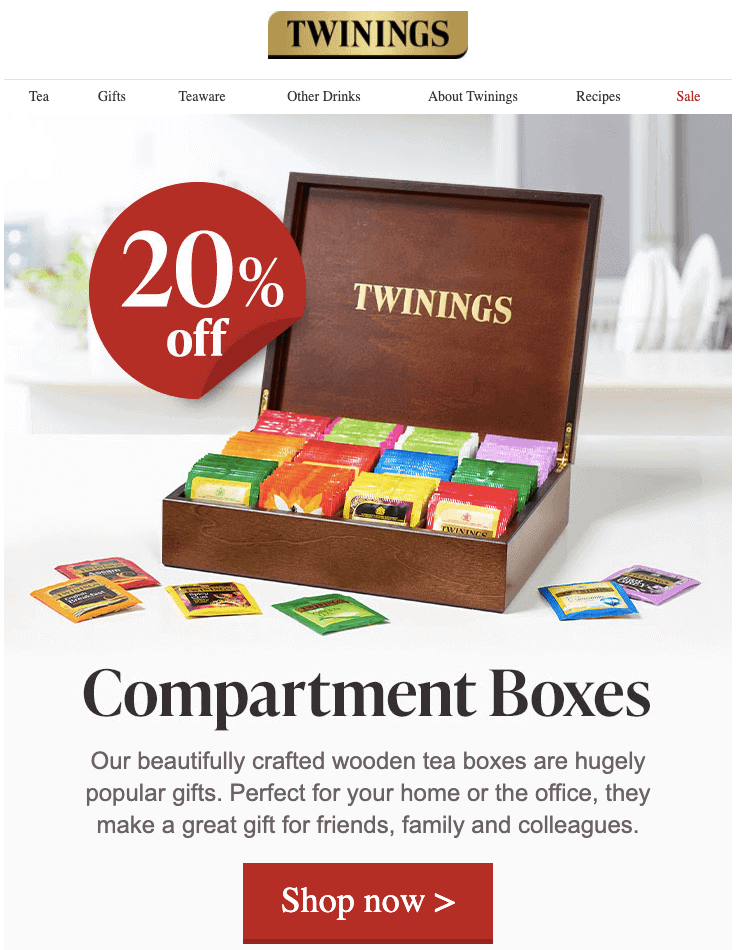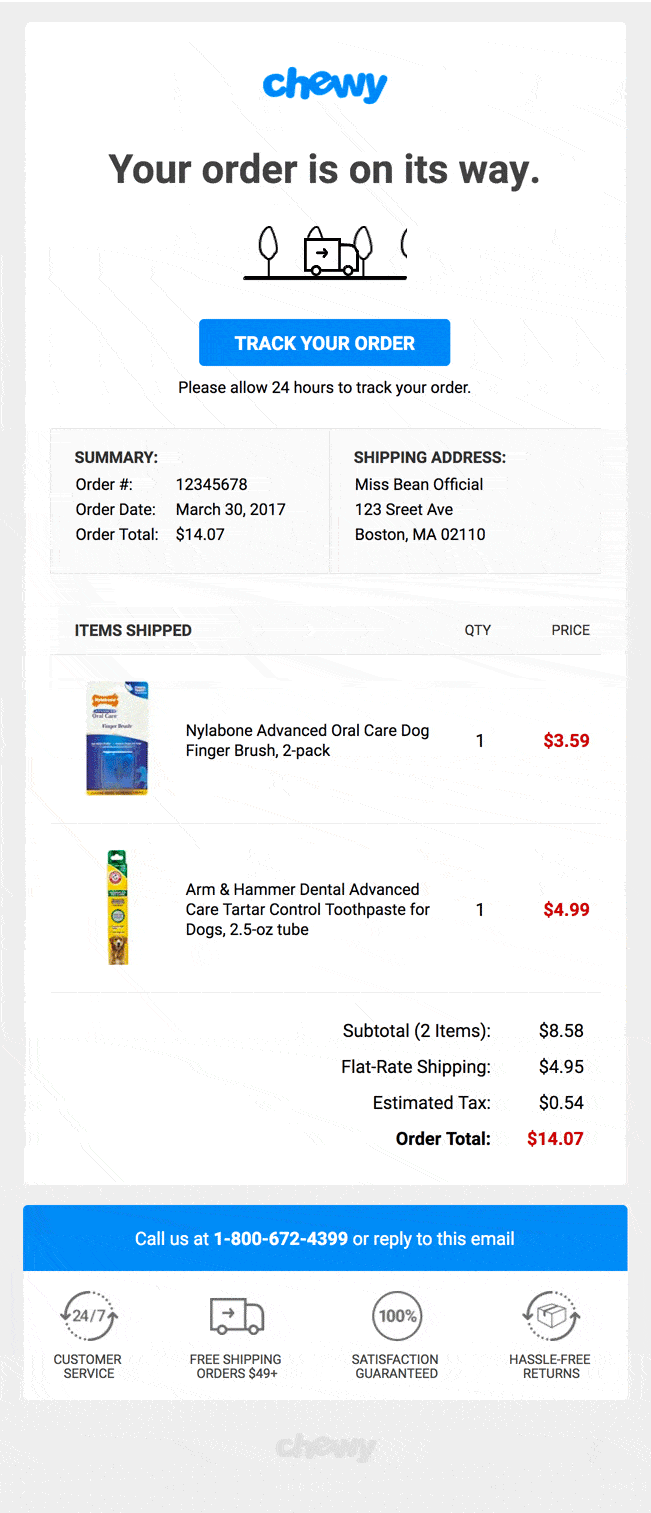Email advertising offers a cost-effective and personalized solution to reaching your target audience with your marketing material. Research has shown that email marketing has one of the highest ROIs among all marketing strategies. In addition, it has a low execution cost, making it perfect for small business marketing.
Aside from these, email advertisement offers other unique benefits for small businesses, including:
- Direct communication
- Targeted marketing
- Relationship building
- Automation and scalability
So, email advertising can help companies that hope to reach their marketing goals without spending a fortune.
But how exactly does one plan and execute an email advertising campaign?
This blog post will provide you with the knowledge to plan, execute, and evaluate the effectiveness of your email advertisement campaign.
Let us dive into it!
Table of Contents
What is Email Advertising?
Email advertising is a direct marketing approach in which email marketers send promotional messages or campaigns to a targeted audience via email to promote products, services, or offers.
This email marketing strategy is designed to elicit instant action, such as purchasing, signing up for a webinar, or taking advantage of a limited-time offer. Email advertisements often include compelling visuals, persuasive copywriting, and clear calls-to-action (CTAs) to encourage recipients to engage with the content.
Email advertising differs from email marketing, a broader term for every communication between a business and its target audience through emails.
While email advertisement is limited to eliciting immediate action–such as making a purchase or attending a webinar–in response to an email, email marketing includes emails aimed at building a relationship with the customer, providing value, and nurturing leads—for example, birthday emails, product updates, educational content, event invitations, etc.
Types of email advertisement
Based on their format, all email marketing efforts can be classified into two types: direct emails and email newsletters.
Direct emails
As their name suggests, these marketing emails are straightforward. This email marketing strategy promotes specific goods, products, and services based on the email recipient’s preferences or past interactions with the business’s products or marketing material.
A successful email marketing campaign is usually time-bound. The combination of urgency and personalization generates immediate action, such as purchasing a product or service or attending a future event.
Direct emails include promotional emails, transactional emails, welcome emails, abandoned cart emails, re-engagement emails, event invitations, and cross-promotional emails.
Email newsletters
Email newsletters are regular, recurring emails sent to a list of subscribers to provide valuable and relevant content consistently. Unlike direct emails, email newsletters are not primarily focused on promoting specific products or offers but on building relationships, providing information, and engaging subscribers over time.
However, they are a great way to advertise directly to your email recipient. The trick to the advertisement with newsletters is to offer value within the email and include call-to-actions that lead email recipients to purchase based on the valuable information you just supplied.
Advertising with newsletters involves some risk and must be done tactfully, never directly.
Critical Components of an Email Advertising Campaign
Understanding the components of an email advertising campaign can help you better plan and execute one. Below are some of the critical elements of an email advertisement campaign.
Target audience
To send successful email marketing campaigns, you must be clear about your target audience and sign up for an email marketing tool with advanced segmentation features.
Your target audience is your email recipients. Before they can receive your email campaigns, they must have come across your brand marketing materials through other channels and consented to receive promotional emails from you.
Only send marketing emails to recipients if they have given their express permission. This is against the laws governing email communication and can result in your email being marked as spam, thus affecting your sender’s reputation.
Content
This is the body of your email marketing campaign. It contains the promotional offer you want to send to your audience. For your email advertisement campaign to be successful, your subject line has to be creative and attention-grabbing. Your email content must also be engaging, straight to the point, personalized, and include an actionable step (call to action).
From experience, the content of a promotional email should include relevant media, such as pictures and videos, to display the products and their capabilities. It should also include social proof, such as testimonials and product ratings, to build trust and customer loyalty. Keep a text-to-image ratio of 60:40 to achieve the best result.
Design
When you create email campaigns, a golden rule for success is to consider the recipients and existing customers and their journey through the email. Use high-quality images, well-organized layouts, clear fonts, and white spaces to make your emails easy to read and optimize the click-through rate for call-to-actions.
Always opt for a responsive email design, as your recipients use different devices to read your emails.
Call-to-action
You miss sales opportunities when you don’t include a CTA in your marketing emails. Including a call-to-action helps your email recipient move further in the sales funnel by taking the next step.
Use call-to-actions strategically to generate prompt actions to your email offers. When writing an email body, ensure that your call-to-actions stand out and use white spaces to prevent visual clutter.
Additionally, use vital copies when writing your call to action; for example, instead of “Click here,” use more compelling and action-oriented phrases like “Save 20%” or “Save a seat.” This way, email recipients can make a purchasing decision without spending time doing too much reading.
Planning Your Email Advertising Campaign
As we have seen, there are many components to executing an email advertising campaign. Therefore, it is essential to plan effectively to succeed at it. Below are some steps to planning your future campaigns that I have found helpful over the years.
Set clear objectives and goals
Without setting clear objectives for your future email campaigns, you wouldn’t know what you want to achieve, how to achieve it, or even how to measure success. Use the SMART method to set clear objectives and goals for your email marketing campaigns.
What does SMART stand for?
SMART is an acronym for Specific, Measurable, Achievable, Relevant, and Time-bound. It is a framework used for setting practical goals and objectives. Here’s what each letter in SMART represents.
Specific
When planning an email ad campaign, clearly define your ideal audience, what they want, when they want it, how they want it, and how you can meet their needs. Also, determine how much sales you plan to make, what expenses you have to make, the necessary tools to purchase, etc.
Clearly define what you want and avoid ambiguity. Most email marketing tools have advanced segmentation and marketing automation features to enable you to send personalized campaigns.
Measurable
Your goals should be measurable and quantifiable. Set concrete criteria for measuring success and determine how you will know when you have achieved them. This way, you can track your progress and evaluate your success.
Again, it is important to sign up for an email marketing service that provides advanced analytics and custom reports based on your preferences and success metrics.
Achievable
Differentiate plans from dreams, which are lofty expectations that are not presently realistic. Evaluate your capacity, understand your limitations, and factor these into your planning. Set goals that stretch your abilities but are within reach with effort and commitment. This way, your goals become realistic and attainable.
Relevant
Consider how your goals align with your broader objectives and priorities. As a small business, consider how your sales goals align with your wider brand growth goal. This will inform the type of offers you include in your marketing emails and how you serve your customers.
Time-bound
Goals should have a defined timeframe or deadline for completion, providing a sense of urgency and accountability. Set specific deadlines or milestones to create a sense of urgency and motivate action.
Understand your audience
The secret to creating a successful email marketing campaign is understanding your audience. Modern email marketing strategies are built around collecting as much data from consumers as possible and analyzing this data to interpret behavioral patterns.
Email marketing offers some of the best analytics among all marketing channels. Analyzing the performance of your email campaign is a great way to learn about the behavior of your target audience and prospects.
However, the buyer persona is the first place to start when trying to understand your audience. Simply put, your buyer persona is a fictitious personality representing your typical audience. It is created by gathering data and making informed guesses based on your collected data.
Your buyer persona must include information about your audience’s personality, demography, status, education, preferences, hobbies, needs, etc.
When done rightly, your buyer persona will provide the information you need to target your audience with the right promotional offer when sending a marketing email. It is worth noting that your buyer persona still needs to be fixed but continues to change as you engage more with your target audience and collect and analyze more data on them.
Good email marketing software lets you track your target audience’s behavior and segment them for further marketing endeavors. They are an excellent tool for understanding your audience.
Develop a content strategy
Developing a content strategy involves creating engaging and relevant content that resonates with your audience’s needs and interests. Your content strategy must align with the goals of your email campaign, and since yours is making sales, you must plan it to generate the most sales from your email subscribers and existing customers.
A great content strategy starts with understanding your customers and their needs. Once you clearly understand your audience’s needs, the next step is to define business objectives and ensure your content aligns with them.
The next phase is to develop a content calendar to help maintain consistency and ensure you cover relevant topics throughout the year. It also allows you to align content with seasonal trends or promotional campaigns.
Read more: Top Local Advertising Ideas to Elevate Your Marketing
Designing Your Email for Maximum Impact
Even though we have discussed email design briefly, we must pay more attention to it, as your email design can make or mar your email advertisement campaign. Let us discuss different elements of an email design and some best practices for maximum impact.
Mobile-friendly design
Today, more email users check their emails through phones than on computers. According to the latest report, mobile email users more than double those who use computers to check their emails. Therefore, it becomes necessary to optimize your email design for mobile devices.
Create responsive designs that adapt to different screen sizes and test your emails across various devices and email clients to ensure compatibility.
Visually appealing layout
A clean, visually appealing layout enhances the user experience and increases engagement. Use white space effectively to avoid clutter, and organize your content in a logical hierarchy. Visual elements such as images, icons, and graphics should complement your message without overwhelming the reader.
Images

While images can enhance the visual appeal of your email, it’s essential to use them judiciously. Opt for high-quality photos relevant to your content and reinforce your message. Ensure images are correctly optimized for fast loading times and include descriptive alt text for accessibility and improved deliverability.
Fonts
Choose fonts that are easy to read and consistent with your brand’s identity. Stick to a maximum of two or three fonts to maintain visual harmony and readability. Use larger font sizes for headings and significant text to make them stand out, especially on smaller screens.
Color schemes
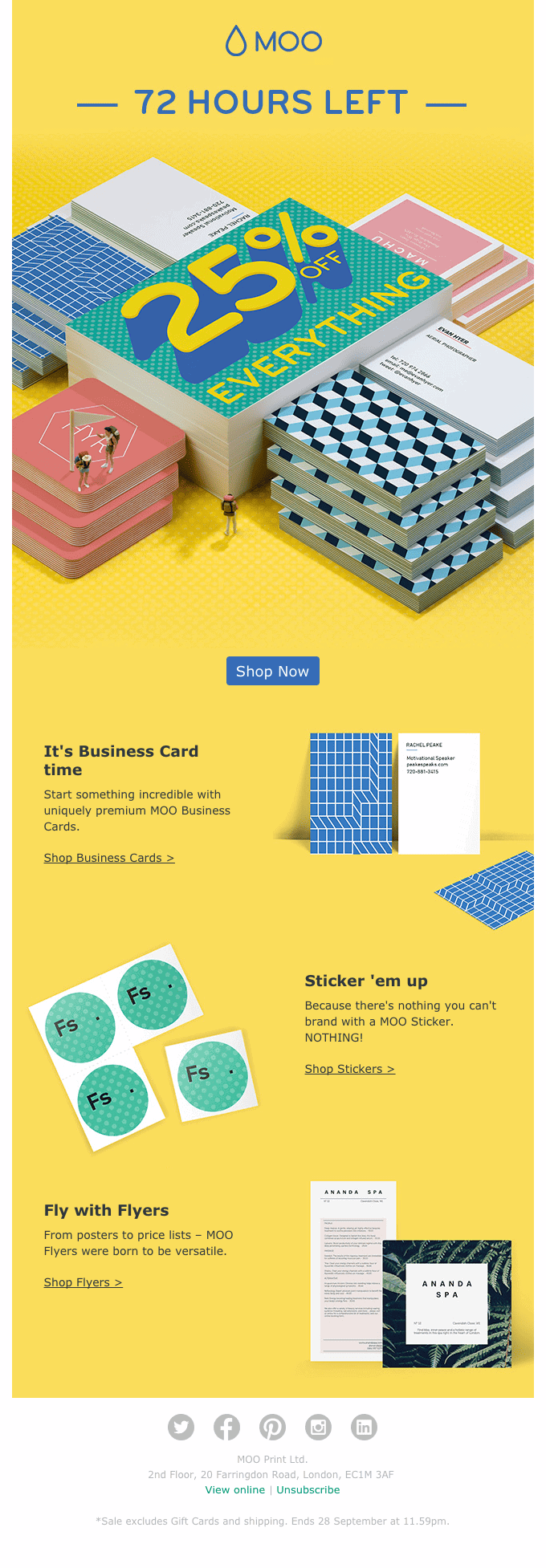
Be mindful of contrast and readability, especially for text and background colors.
Subject lines
The subject line is the first thing recipients see and is crucial in determining whether they open your email. Write clear, concise subject lines that grab attention and communicate the value proposition of your email. Personalization, urgency, and curiosity can effectively increase open rates.
CTAs (Call to action)
Your CTA prompts recipients to take the desired action, whether purchasing, signing up for a webinar, or downloading a resource. Make your CTAs prominent, using contrasting colors and clear, action-oriented language. Experiment with different placement and wording to optimize click-through rates.
Compelling content
Ultimately, your email’s success hinges on the quality of its content. Provide valuable, relevant information that resonates with your audience and addresses their needs or pain points. Keep your message concise and focused, with a clear emphasis on benefits rather than features.
Read also: Top Tools and Strategies to Improve Email Deliverability Rates
Leveraging Automation and Personalization
Email marketing automation allows you to automate many vital processes and offers new opportunities for personalizing your promotions and offers. With the help of email marketing software, you can automate several aspects of your email marketing campaign.
How to use email automation tools to schedule and manage campaigns efficiently
Various email marketing automation tools can be used to schedule and manage the email marketing process. We cannot cover individual steps for planning and managing campaigns for each tool; however, we can provide general guidelines for using these tools:
- Create a content calendar: Plan your content for promotional offers ahead of time, factoring in seasonal variations and holidays.
- Schedule emails periodically: Once your email content calendar is ready, schedule them beforehand. Scheduling offers consistency and timely delivery, which leads to more conversions.
- Automate email responses for specific actions: This helps keep your customers engaged with suitable offers and encourages them to purchase. You should automate welcome emails, confirmation emails, emails after purchases, and abandoned cart messages. These messages should carry offers on products they are interested in or similar products to what they purchased, increasing their chances of making a purchase.
The role of personalization in email advertising
Personalization in email advertising is like tailoring a suit—it fits better and feels more exclusive. Businesses can craft personally resonating messages using recipient data like name, location, and past interactions.
This helps to build a sense of connection, increasing the likelihood of engagement and conversion. This is especially important when sending new subscribers the first email marketing campaign.
Moreover, personalization isn’t just about addressing individuals by name; it’s about delivering relevant content to build loyal customers. Tailored recommendations based on previous purchases or browsing history demonstrate understanding the recipient’s preferences, enhancing the overall user experience and driving more robust results.
Measuring Success and Optimizing Your Campaigns
Email advertising remains one of the best marketing channels for making sales. However, it is essential to collect and analyze data periodically. This way, you can measure success and optimize components of your email advertisement campaigns that are performing poorly.
Measuring success and optimizing your campaigns in email advertising involves tracking key metrics, utilizing tools for monitoring performance, and implementing strategies for A/B testing and continuous improvement. Here’s how to approach it.
Key metrics
The KPIs you measure are typically in line with your objectives and goals. These should have been set in the planning phase of your email advertisement campaign. Here are the key metrics to look out for for an email promotion campaign.
The open rate
This is the percentage of recipients who open your emails. It indicates the effectiveness of your subject lines and sender name. To improve your open rate, consider using a personalized and engaging subject that invokes urgency.
Click-through rate
This is the percentage of your recipients who click on links within your email. This indicates your content’s engagement level, your email design’s effectiveness, and your CTAs. Send personalized and targeted emails based on customers’ purchase history or preferences to improve your click-through rate.
Conversion rate
This is the percentage of recipients who complete a desired action, such as making a purchase or signing up for a webinar, after clicking on a link in your email. It reflects the campaign’s ultimate success in achieving its objectives.
Bounce rate
This is the percentage of your emails that do not reach your recipient’s inbox. High bounce rates can indicate issues with your email list quality or deliverability. To reduce your bounce rate, use a good email service provider and clean up your email lists periodically; I recommend every six months.
It is also helpful to avoid using spam words in your emails, as this can trigger spam filters.
Unsubscribe rates
The percentage of recipients who opt out of receiving further emails from your brand. It’s essential to monitor unsubscribe rates to gauge the relevance and frequency of your email communications.
Email Advertising Tools and Software
There are hundreds of tools for tracking your email marketing metrics, many of which offer free features. Here are some tools that I recommend.
Email marketing platforms
Email marketing platforms such as Mailchimp, EngageBay, Constant Contact, and SendPulse are great tools for analyzing your email marketing success. They offer detailed information on your customers’ responses to your emails and information on your website’s activities, such as purchases and abandoned carts.
HubSpot’s and EngageBay’s all-in-one tools are helpful because they help plan your entire marketing and sales process beyond email marketing.
All these tools are reasonably priced, easy to use, and have similar features. Your choice could come down to issues such as customer service and preference. I do not advise using an ESP to run an email promotion campaign, as their analytics are limited even with paid subscriptions.
Google Analytics
Aside from email marketing platforms, you can use Google Analytics to track your email success, but email marketing platforms offer more detail. Using Google Analytics to track critical metrics may require some skill to set up and monitor.
You should use Google Analytics as an addition to email marketing platforms and not as a substitute.
Strategies for A/B Testing and Optimization
Email marketing comprises several components, and the difference between failure and success sometimes lies in the minutest details, like the color of a CTA, a font style or size, the wording of a subject line, etc. A/B allows you to experiment between choices to see which performs better.
A/B testing is an excellent technique for optimizing email campaigns. Here are some strategies for A/B testing and optimization.
- Subject lines: Test different subject lines to identify which resonates best with your audience and drive higher open rates.
- CTAs: Experiment with different calls to action, button designs, and placement within your emails to optimize click-through rates and conversions.
- Content: Test variations in content format, messaging, and visuals to determine what resonates most with your audience and drives engagement.
- Send times and frequency: Test different send times and frequencies to identify the optimal timing for reaching your audience when they are most likely to engage with your emails.
- Segmentation: Segment your email list based on demographic, behavioral, or engagement data, and tailor your content and offers to specific audience segments for better relevance and effectiveness.
Legal and Ethical Considerations
Running an email campaign can allow you to access private information about your target audience. However, this information must be used within the confines of the law and with the utmost regard for ethical considerations.
Before executing an email campaign, you must become familiar with the following rules and ensure you comply with them.
GDPR (General Data Protection Regulation)
The GDPR applies to businesses operating within the European Union (EU) and targeting EU citizens. It governs the collection, processing, and protection of personal data. Essential requirements include obtaining explicit consent for data processing, providing transparent privacy policies, and offering email unsubscribe options.
CAN-SPAM Act
The CAN-SPAM Act, enforced by the Federal Trade Commission (FTC) in the United States, sets rules for commercial email messages. It requires clear identification of the sender, including valid postal addresses, provision of opt-out mechanisms, and honesty in email content.
CASL (Canada’s Anti-Spam Legislation)
CASL regulates commercial electronic messages (CEMs) sent to or from Canada. It mandates obtaining express consent from recipients before sending CEMs, providing identification information, and including unsubscribe mechanisms.
Beyond legal obligations, ethical considerations are important in email marketing because they guide how businesses engage with their audience and grow trust. Some ethical considerations that guide responsible data practices and email advertising strategies include:
- Obtaining consent
- Clear communication
- Respecting privacy
- Providing opt-out options
- Avoid spam tactics.
Including a double opt-in for potential customers who sign up for your email list is also important.
Read also: Awesome Promotional Email Examples From Top Brands
Examples of Successful Email Advertising Campaigns
So far, we have discussed several aspects of executing an email advertisement campaign, including planning, maximizing its key components for optimal results, measuring success and optimizing the campaign, and so forth.
These are all well explained, but do they work in real life?
Let’s look at some examples of email advertising and explain what they did to reach their goals.
Airbnb’s personalized recommendations
Campaign objective
Airbnb aimed to increase user engagement and bookings by sending personalized recommendations based on users’ past searches and preferences.
Strategy
Using data-driven insights, Airbnb segmented its email list based on user’s previous interactions with the platform, including search history, saved listings, and past bookings. They then sent tailored emails with personalized recommendations for accommodations in desired destinations, compelling visuals, and social proof.
Success factors
- Personalization: By leveraging user data, Airbnb delivered highly relevant and personalized recommendations, increasing the likelihood of conversion.
- Visual appeal: Including captivating visuals and user-generated content enhanced the appeal of the email and encouraged recipients to explore the featured listings.
Key takeaways
- Utilize data: Leverage customer data to personalize email content and recommendations, enhancing relevance and engagement.
- Visual storytelling: Incorporate visually appealing elements and user-generated content to captivate recipients and drive action.
Warby Parker’s interactive try-on experience
Campaign objective
Warby Parker aimed to promote its eyewear products and drive online sales by offering an interactive virtual try-on experience through email.
Strategy
Warby Parker created an interactive email campaign that allowed recipients to try on different eyeglasses frames virtually directly within the email. Users could upload a photo or use their webcam to see how different frames would look on their faces, enhancing the online shopping experience.
Success factors
- Interactivity: The interactive try-on experience within the email engaged recipients and provided a personalized shopping experience, leading to higher conversion rates.
- Convenience: By allowing users to try on frames without leaving their inbox, Warby Parker reduced friction in the shopping journey and encouraged immediate action.
Key takeaways
- Innovate with interactivity: Explore interactive email elements such as quizzes, surveys, or product try-ons to engage recipients and drive conversions.
- Enhance convenience: Streamline the shopping experience by minimizing steps and allowing users to take action directly from the email.
Conclusion
Mastering the art of email advertisement is vital for small businesses looking to drive sales on a limited budget. By understanding the different components covered in this article, business owners can become more deft at executing an email advertising campaign.
However, it is essential to note that success in email advertisement goes beyond comprehension into action and adaptation. To become successful, prioritize data collection and analysis and optimize your campaign based on the results of your study. Remember, email marketing success is more of a journey than a destination.
Did you find this email helpful? We would like to hear about your experience in email advertisement and what you plan to do differently after reading this article.
Frequently Asked Questions
How can I ensure my email advertising is mobile-friendly?
To make your email mobile-friendly, prioritize using a responsive email design. This allows your content to display correctly and remain visually appealing, whether viewed on a desktop, smartphone, or tablet. Opt for a clean and simplified layout that prioritizes readability and ease of navigation on smaller screens.
Avoid cluttered designs and excessive use of graphics or text that can overwhelm mobile users. Additionally, ensure your CTAs are prominently displayed and easily clickable on mobile devices.
What are the critical metrics for measuring the success of email advertising?
Critical metrics for measuring the success rate of an email advertisement campaign include open rates, click-through rates, conversion rates, and bounce rates. Your open rate is the percentage of email recipients who click on your email.
The click-through rate is the percentage of your email recipients who click on the links within your email. The conversion rate is the percentage of your email recipients who take the desired action.
How often should I send out advertising emails to my audience?
This depends on several factors, such as your industry, audience preferences, and the nature of your products or services. While there are industry averages for different businesses, experimenting with your audience is the sure way to go.
Monitor engagement metrics such as open rates, click-through rates, and unsubscribe rates to gauge how your audience responds to different frequencies of emails.
